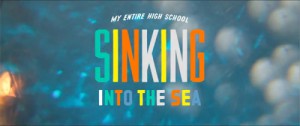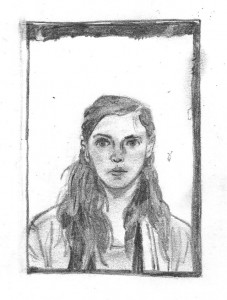
MOK: Both these pieces are excellent examples of something I see throughout your work, which is this very gestural, observed quality to figures with strong acting, and projection of an inner process behind the character’s eyes and in their posture. I see influences from R. Kikuo Jonhson and Jillian Tamaki in there, who I know you listed as influences, along with Mignola, Lynda Barry, Tomine, Ware, Clowes, Shaw, The Dark Knight Returns, in this list that you made last April. Which is also interesting because then there are times, certain panels, and then your self-portrait, where you put in this super cartoony manga cat-mouth smile. I’m curious about your approach to figures, acting, gesture, and also playing against that super-observed, illusionistic style with other drawing vocabularies.
RICKS: I think it just comes down to me just—I want this to come across as clear as possible. I want the audience to know exactly what I mean. I want there to be almost no ambiguity, because it’s not written. There’s no, “she said sourly,” “she said slyly,” I want it to read. Also, always trying to push… I hope this is a good example: one of the things that I found appealing, and a lot of people find appealing about [Hellboy creator] Mike Mignola is how he gets image and weight across in his incredibly stylistic artwork. But that comes from decades of observing and drawing. He put in the work before he could strip it down and simplify it. That’s what I wanna go for: I observe, I draw. I’m always trying to learn new things and new ways. I’m always down to expand as an artist. I want to bring that into my work. And just keep evolving as an artist, and not stagnate. I’m always worried, like, “Oh, my character’s too stiff, and their mouth is not open enough!” So I’m always trying to push and expand. – Annie Mok and K.L. Ricks conversation at TCJ.
Dash Shaw wrote and directed the animated feature film mentioned here. It stars Jason Schwartzmann, Lena Dunham, Reggie Watts, Maya Rudolph, John Cameron Mitchell and Susan Sarandon.


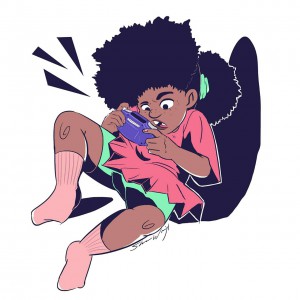
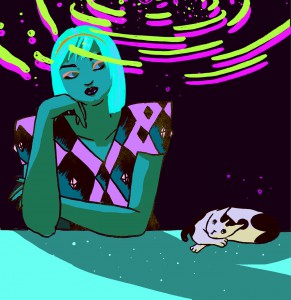

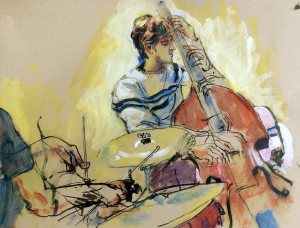
The Second Edition of “Stories Matter” at the Society of Illustrators in New York with moderator Richie Pope and panelists Shannon Wright, Cathy G. Johnson, John Lee, Odera Igbokwe, Yao Xiao, Ronald Wimberly, and Alexandra Zsigmond is below.
[soundcloud url=”https://api.soundcloud.com/tracks/250653486″ params=”auto_play=false&hide_related=false&show_comments=true&show_user=true&show_reposts=false&visual=true” width=”100%” height=”450″ iframe=”true” /]
Your comics often play with negative space. I was wondering when you started doing that, or if there was any other work that inspired you to do that?
Not that I can think of. I mean, it’s been funny working in comics because I’m not super influenced by them. I was coming from what I was doing as an illustrator, or from fine arts practice. Especially working in pencil and erasing a lot and slowly removing unnecessary elements. I learned that I don’t have to show everything, and that I could use things as symbols for other things. I just gradually reduced the process. I think that After Nothing Comes shows that progression, which is cool. The pages get, like, emptier and emptier throughout the book.[Laughs] – Rachel Davies talked to Aidan Koch.
Also, for a rainy day…
